Sam Alcock, Dubai director of Tenable Fire Engineering Consultancy, examines the responsibility industry stakeholders have when ensuring fire and life safety.
The recent increase in fires across the UAE has brought the importance of fire and life safety to the forefront, highlighting the need for more understanding and awareness of fire prevention and containment throughout the industry. Ongoing preventative measures focused on mitigating the risk of fire and loss of life are often overlooked until the event of a real fire when, perhaps, it is too late to repair the damage caused due to the the fire not being adequately contained.
Common causes of fires are universal and are as likely to happen in other regions as they are here in the UAE and other GCC countries. These could include on-site hot works, provisions for increased electrical loads not being taken into consideration during the design stage of older buildings, residents disposing of cigarettes over balconies and BBQ’s or shishas being used. However, the dry heat in the Middle East, particularly during the summer months, and a natural buildup of sand and dust can contribute to the acceleration of a fire, making it critical for fire and life safety systems to be 100 per cent operational in the event of a fire emergency. While it is not always possible to avoid a fire, there are steps contractors and developers should take at the different stages of a project to minimise the risk of technical faults and reduce the risk of a fire accelerating quickly, making it more difficult to contain and control.
The UAE’s regulatory framework, UAE Fire and Life Safety Code of Practice, outlines industry best practice, detailing what must be adhered to with regards to factors such as means of egress, fire detection and alarm systems, fire protection systems and fire safety guidelines during construction. Chapter 18 defines stakeholder responsibilities, highlighting the need for developers to include fire and life safety as a key component during the initial stages of a building’s life cycle. Providing a building has been designed with fire and life safety being prioritised, damage from fire should be minimal in the event one breaks out. However, we face the challenge that some within the industry still see this as an unnecessary expense without fully understanding the long-term cost savings that result from a robust fire and life safety strategy.
During the construction phase, owners, developers and main consultants are bound by the Code of Practice to appoint a fire engineer who is qualified and well versed in the UAE fire and life safety code and international best practice. This ensures the quality of drawing submissions meets all required standards, thorough inspections are being carried out and materials used are certified and in-date. The appointment of a qualified fire engineer also provides stakeholders with reassurance that construction is following the original design intent and cost-saving measures are not being put in place to remove elements of a building’s infrastructure. The risk of not engaging with a professional fire engineering firm during the design and construction phase, is unexpected changes to the design and construction further down the line, which often result in time delays and the requirement for additional unbudgeted expenses to rectify design errors.
During the pre-commissioning and inspection phase, it is the responsibility of the consultant appointed to ensure that the performance testing of the fire life safety systems fully complies with the design intent and relevant local and industry codes, and that the building is fully prepared for Civil Defense final inspection. Engaging with a qualified fire engineer gives reassurance that any areas of concern will be easily identified and rectified in order to ensure a successful final inspection. A pre-commissioning checklist can be provided by the fire engineer to guide contractors and MEP providers when preparing for contract sign off and Civil Defense inspections.
Upkeep of a building asset is as critical for fire and life safety as the stages prior to the building being operational and occupied. Once a building has been handed over, the responsibility then falls to building owners and facilities management service providers to ensure ongoing adherence to the Code of Practice and Civil Defense requirements. The common but unfortunate reality is that some of the region’s asset owners and their third-party suppliers only ensure the building’s life safety system’s paperwork is in order and do not engage with an unbiased third party to oversee regular performance testing on all systems including fire alarms, sprinklers and emergency stair pressurization systems. By appointing a specialist fire engineer, any faults in the systems can easily be identified, a full risk assessment can be carried out to pinpoint high-risk areas and all of the options available to safeguard the building to ensure the preservation of life.
While we have seen great improvement across the industry, bolstered by the UAE government’s commitment to the safety of its citizens and residents, and more developers engaging with specialists during the design phase, this willingness to employ best practice can sometimes waiver during the construction phase of projects. It is therefore vital that projects have full buy-in from all stakeholders to commit to the process of ensuring the highest standards of fire and life safety from the outset of a buildings journey. Complacency is all too often only recognised when a fire has already occurred and it is the responsibility of all stakeholders to be proactive with regards to fire prevention.
